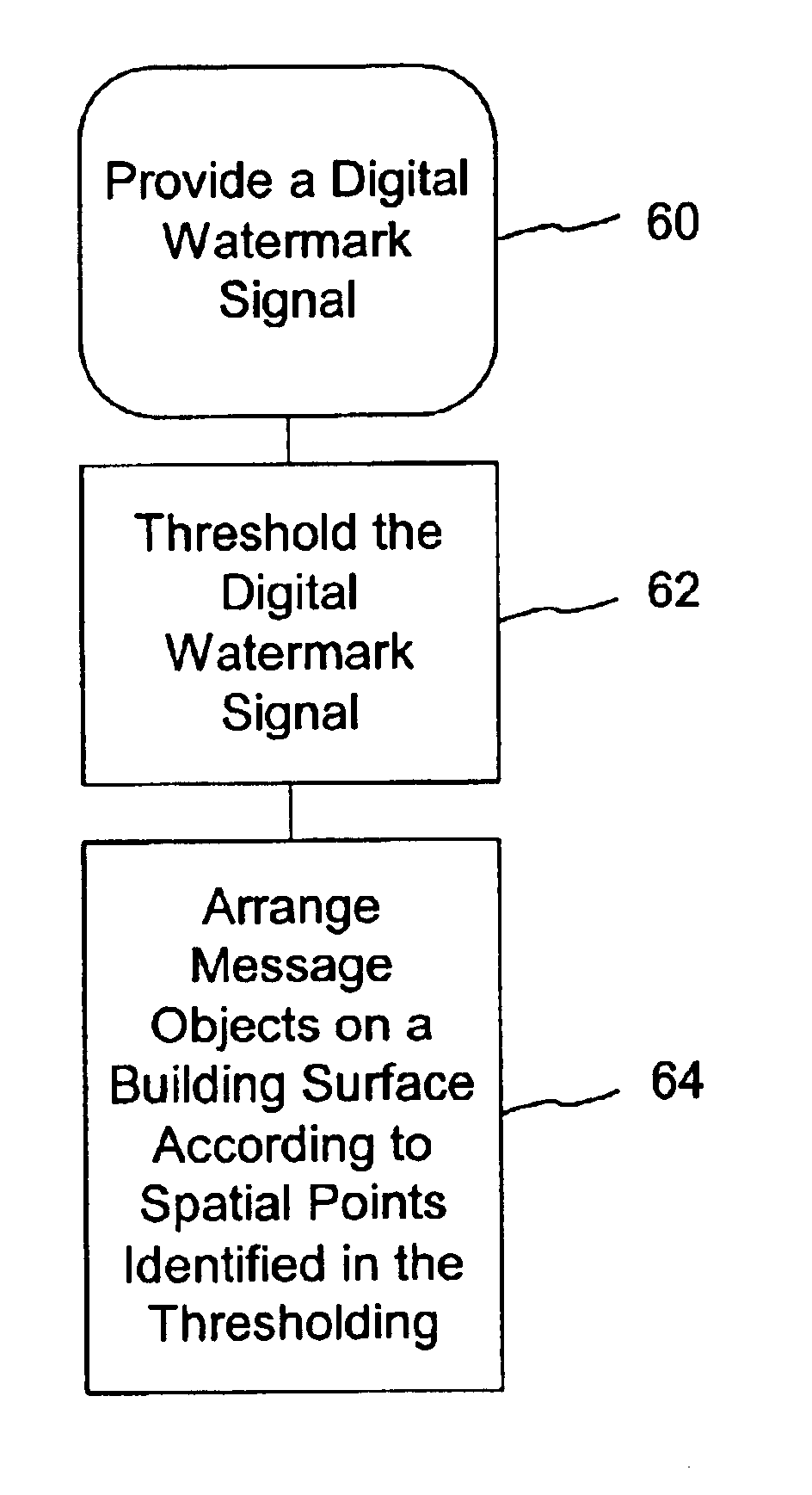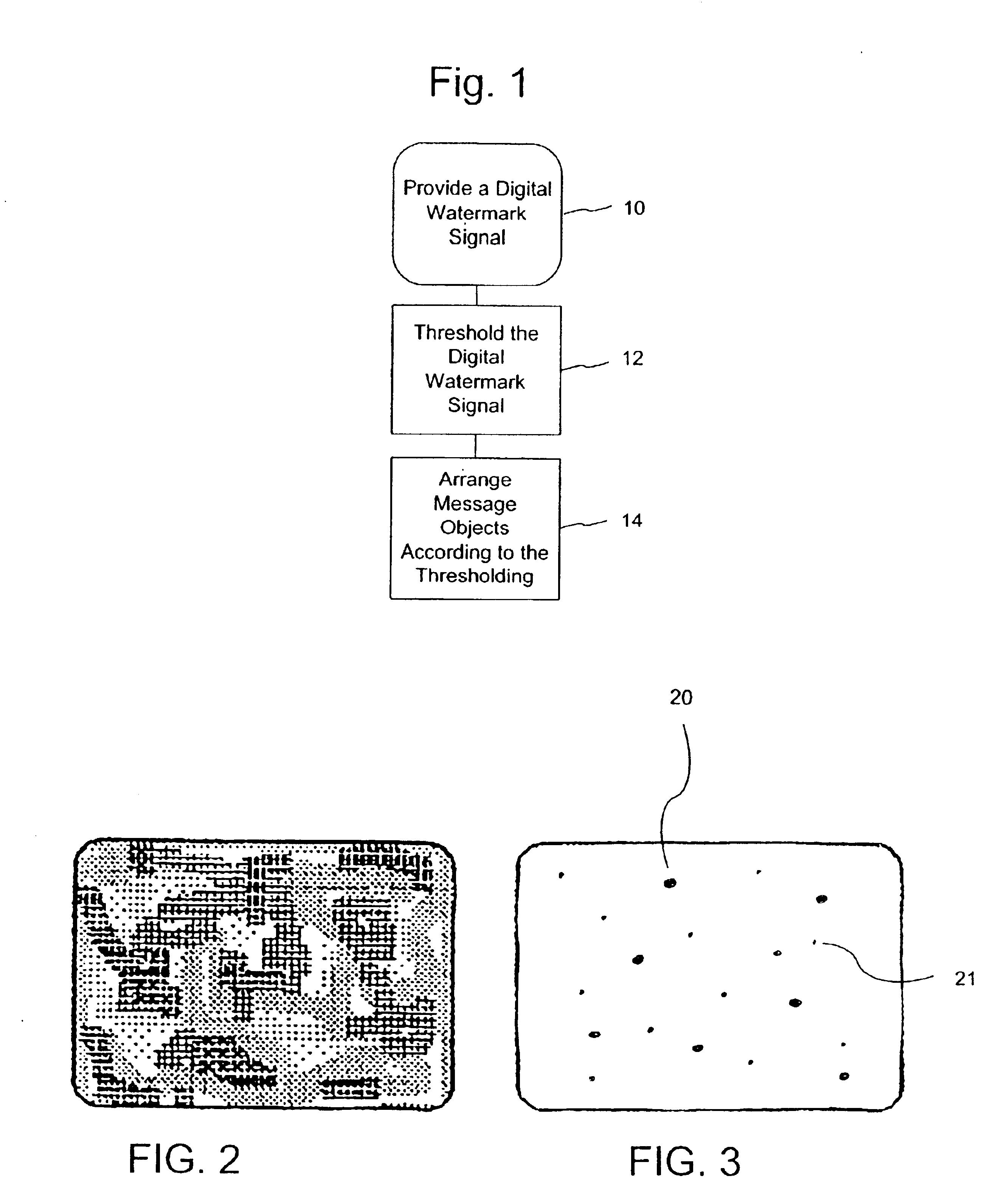Hiding geo-location data through arrangement of objects
a geo-location and object technology, applied in the field of steganography and data hiding, can solve the problem of artwork that requires little, if any, further modification
- Summary
- Abstract
- Description
- Claims
- Application Information
AI Technical Summary
Benefits of technology
Problems solved by technology
Method used
Image
Examples
Embodiment Construction
[0022]We have found that the arrangement of objects within an image can be used to convey information—which is otherwise imperceptible to a human viewer. We arrange so-called “message objects” to convey or represent a steganographic signal (e.g., a digital watermark). We define a message object broadly herein as including an information carrier, an image object, a shape, an object or collection of objects, a pixel or group of pixels, a physical object, paint or other covering, surface texture, a contrast or color / gray-scale area, etc. A set of message objects is arranged within an image or area to form a steganographic message. A few examples are provided below.
[0023]Consider a drawing illustrating a Dalmatian puppy. The puppy has a white coat complimented with black spots. An artist (or digital editor) can arrange a set of spots—an example of our message objects—so as to convey a hidden or steganographic message. More practical, however, is to align the spots according to a predete...
PUM
| Property | Measurement | Unit |
|---|---|---|
| Structure | aaaaa | aaaaa |
| Surface | aaaaa | aaaaa |
| Distance | aaaaa | aaaaa |
Abstract
Description
Claims
Application Information
 Login to View More
Login to View More - R&D
- Intellectual Property
- Life Sciences
- Materials
- Tech Scout
- Unparalleled Data Quality
- Higher Quality Content
- 60% Fewer Hallucinations
Browse by: Latest US Patents, China's latest patents, Technical Efficacy Thesaurus, Application Domain, Technology Topic, Popular Technical Reports.
© 2025 PatSnap. All rights reserved.Legal|Privacy policy|Modern Slavery Act Transparency Statement|Sitemap|About US| Contact US: help@patsnap.com



